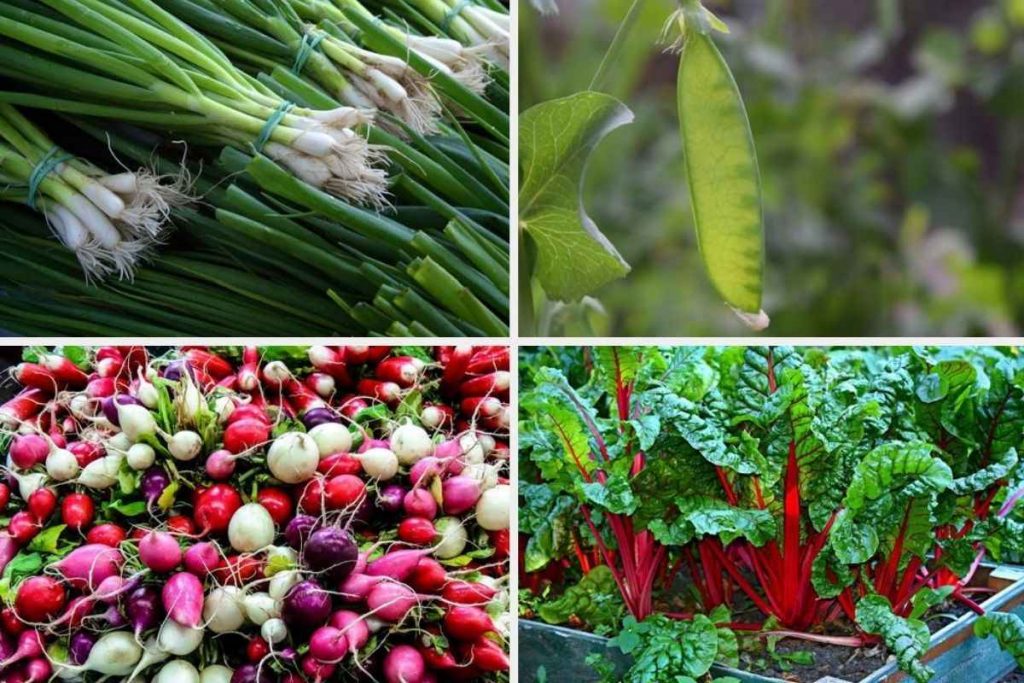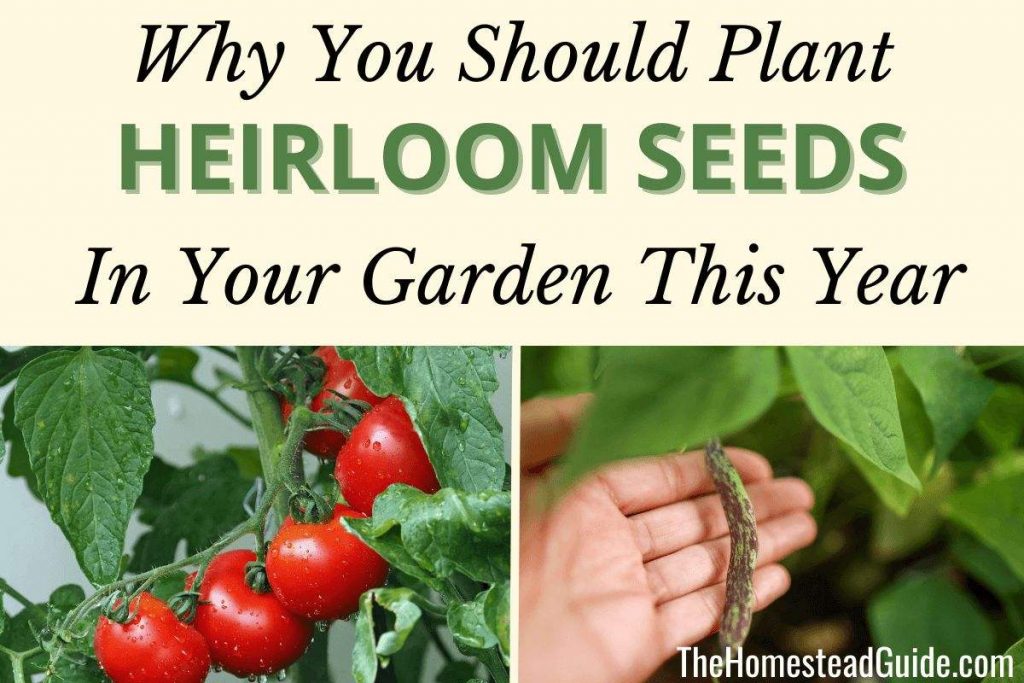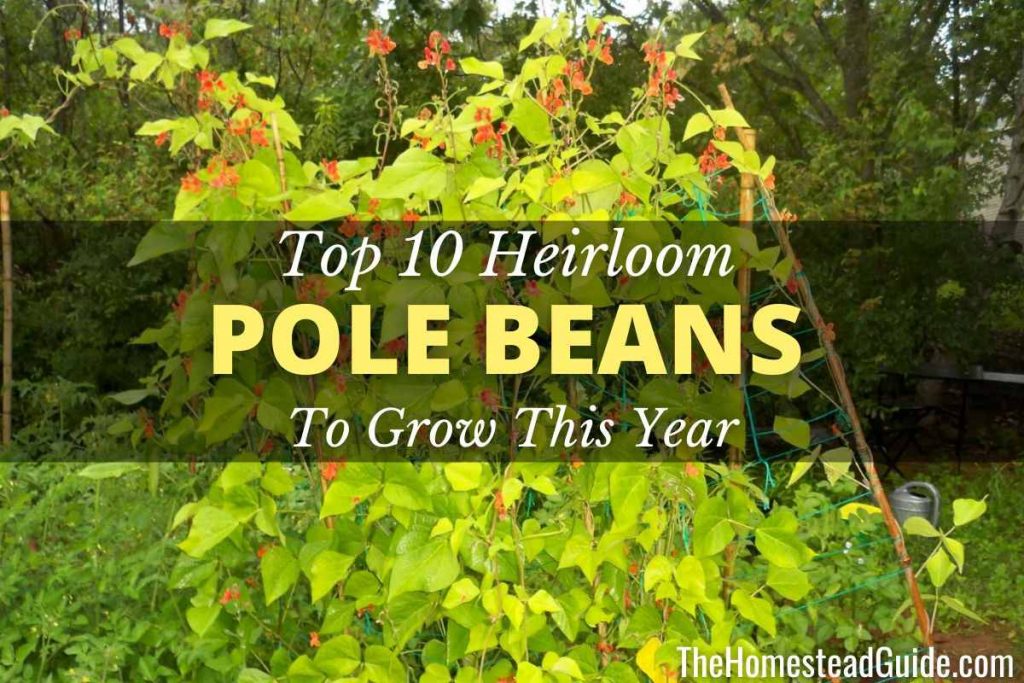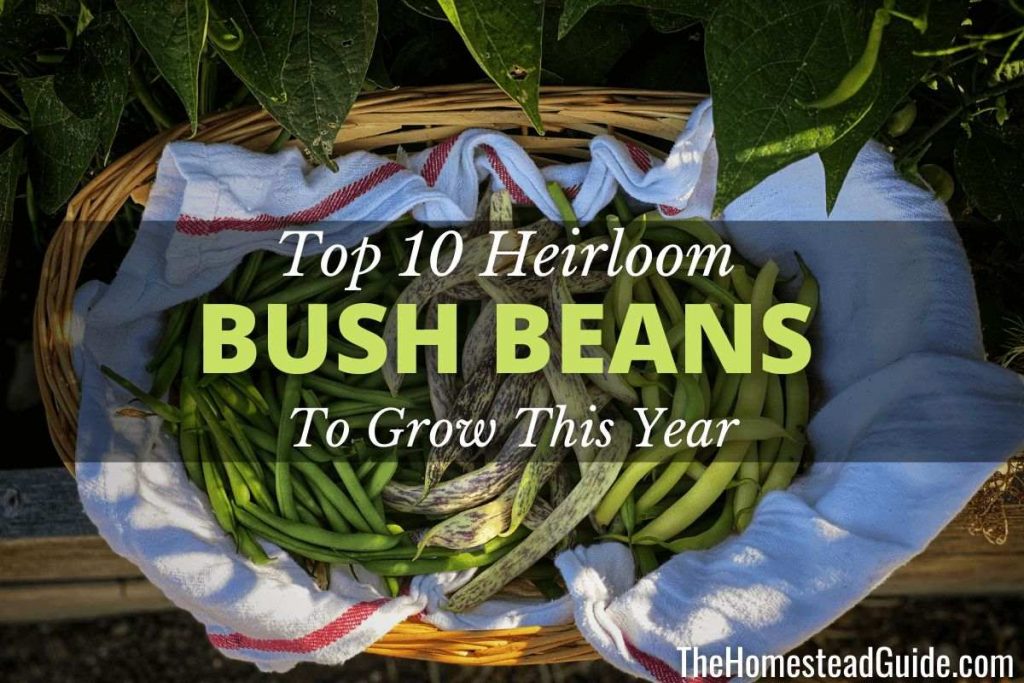Are you just getting started with growing your own food? Maybe you’re just looking for some delicious veggies that will be ready in just a few weeks. Either way, I’ve got you covered! Here is a list of some of the fastest vegetables to grow for beginners so you can get started right away.
If you’re planning on growing peppers, tomatoes, cucumbers, squash or any other vegetables that take a little more time to be ready, it’s a great idea to also include some of these fast-growing vegetables as well so that you can continuously harvest a bounty of fresh veggies from the beginning of summer until the fall. I always include a bunch of these vegetables in my garden along with the ones I mentioned above for this exact reason!
So if you’re just getting started in organic vegetable gardening or simply looking for some new ideas, check out this list of my favorite fast vegetables for beginners!
1. Radishes (21-35 days)
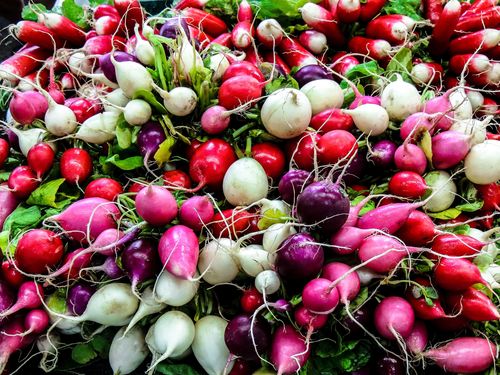
Radishes are fast-growing vegetables that are perfect for gardening beginners. In as little as three weeks, you can have radishes ready to harvest. They are also relatively easy to care for – simply water them regularly and make sure they get plenty of sunlight. Radishes do best in cooler temperatures, so they are best grown in the spring and early fall. Sow radish seeds directly in the ground ½ to 1 inch deep and 1 inch apart in rows with 12 inches between each row. Thin them out after a week by snipping off the greens at the soil line. Did you know you can eat the leaves as well as the root? Since radishes grow so quickly, I’d recommend sowing a new round of seeds every 10 days to keep a continuous harvest going until it gets too hot in the summer.
When it comes time to harvesting, pull up the entire plant and cut off the radishes at the top of the root. Eat radishes fresh or add them to salads for a crunchy, zesty flavor. I like making quick pickled radishes to keep in the fridge for a few weeks to add to tacos and salads or just for eating straight!
2. Bok Choy/Pak Choy (30-50 days)
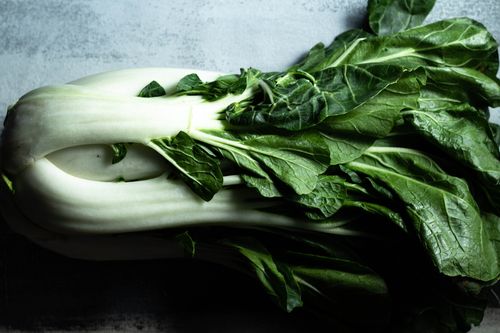
Bok choy, or pak choy, is one of the fastest vegetables to grow for beginners. It is a member of the cabbage family and has a mild, slightly sweet flavor. Bok choy is rich in vitamins A and C as well as calcium and iron. Best of all, bok choy can be ready to harvest in as little as 30 days from planting.
This leafy green vegetable is a popular choice in Asian cuisine, and can be used in stir-fries, soups, and more. Bok choy is a cool weather crop, so it can be planted in early spring or fall. It grows best in full sun, but can also tolerate partial shade. One of the best things about bok choy is that it is relatively low maintenance.
The plants should be spaced about 12 inches apart, and the soil should be kept moist but not waterlogged. There are varieties such as Asian Delight that grow quickly and are resistant to bolting, which is when a plant flowers and goes to seed, often turning the leaves bitter and unpleasant. Asian Delight is my favorite variety of bok choi!
This is another cool weather crop, so plant in spring or fall every 14 days or so for a continuous harvest.
3. Arugula (20-50 days)
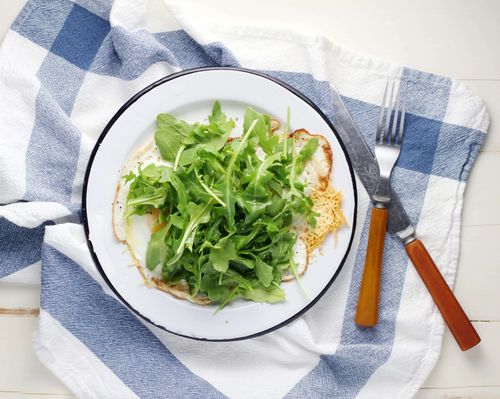
Arugula is another fast vegetable to grow for beginners. It can be grown from seed or transplanted, and it only takes around 30 days to mature. You can also start harvesting arugula as microgreens as soon as seedlings start to emerge. Also, arugula is a versatile vegetable that can be used in a variety of dishes. Whether you want to add some flavor to your salads or spice up your pizza or pasta, arugula is a great option.
Arugula is a cool-weather crop, so it’s best to sow the seeds in early spring or late summer. When it comes time to harvest, pull off or cut off the outer leaves and keep the crown intact so that it will continue to grow.
Arugula is also very easy to grow in containers and raised beds due to how compact the plants are. Arugula bolts in hot weather, so if you are planting in containers, make sure to move the plants out of the direct sun during the hottest times of the day.
4. Swiss Chard (50-60 days)
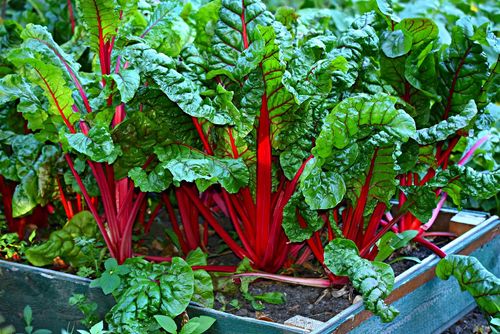
Swiss chard is another great beginner-friendly vegetable. In less than two months, you can be harvesting this nutrient-rich leafy green from your own garden. Swiss chard is also one of the most versatile greens, making it a great addition to any meal. It’s considered a superfood! Try stir-frying it with other veggies or adding it to soup.
Swiss chard is best harvested when it’s young and the stems are still tender. When it’s still young, it can be eaten fresh, and once it starts to mature, it’s usually cooked first, as the leaves are a little tougher. I like to sauté Swiss chard with butter, garlic, parmesan and some lemon juice!
5. Mustard Greens (30-40 days)
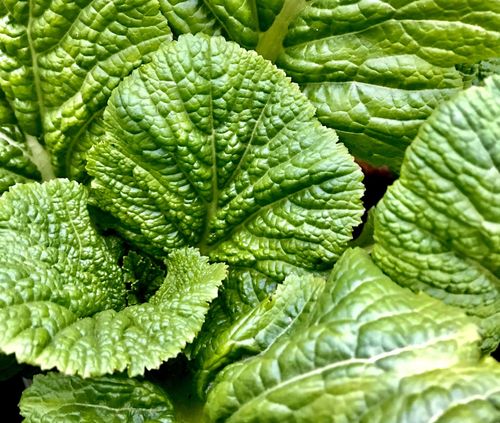
For anyone interested in starting a garden, mustard greens are one of the fastest vegetables to grow. You can start harvesting them right away as microgreens, or you can wait until they start to mature, but either way, you can have fresh, tangy mustard greens to add to your salads or stir-fries in just a few weeks. Just plant the seeds, water them regularly, and thin out the seedlings when they start to crowd each other. With a little care, you’ll be harvesting fresh mustard greens in no time. These leafy greens are easy to care for and can be harvested in as little as four to six weeks.
Mustard greens prefer full sun and well-drained soil, so be sure to choose a spot in your garden that gets plenty of sunlight. Water mustard greens regularly, especially during hot, dry weather. When the leaves are four to six inches long, they’re ready to harvest. Cut or pull off the leaves at the base of the plant, leaving the crown intact so that the plant can continue to grow. Mustard greens also make a great addition to containers and salad green planting combinations!
6. Rapini/Broccoli Rabe (40-45 days)
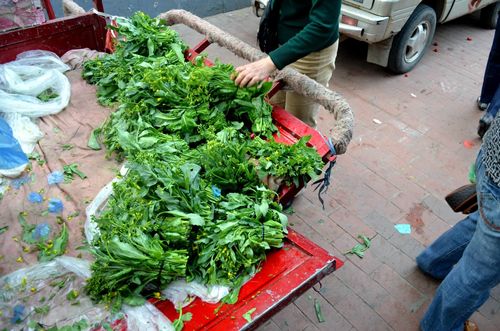
If you’re new to gardening and are looking for fast-growing vegetables to get started with, rapini is a great option. Also known as broccoli rabe, this leafy green vegetable is actually not related to broccoli – its closest relative is the turnip! It grows best in cool weather, so it’s a good choice for planting in the spring or fall. Rapini is fast-growing, so you can expect to see results within just a few weeks of planting. And because it’s a leafy green, it’s packed with nutrients like vitamins A and C. So if you’re looking for a fast, healthy option for your first garden, consider growing rapini. It’s delicious sautéed fresh with garlic, parmesan and lemon!
7. Green Onion (20-30 days)
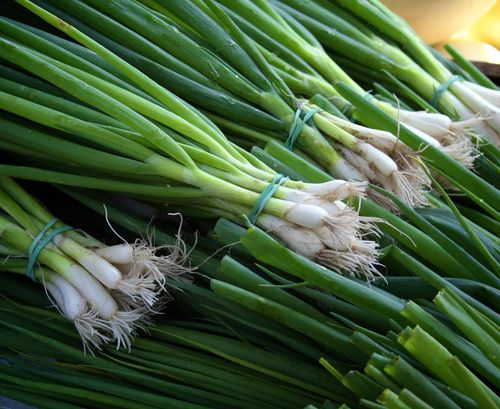
Also known as scallions, green onions are one of the fastest vegetables to grow, making them ideal for gardening beginners. You can start harvesting the green tops as soon as you want! They work so well in so many things, like sweet and sour pork, chicken noodle soup, tuna salad, on top of potato pancakes with sour cream… I could go on.
Green onions will take a little longer if you start them from seed. You can start them indoors about 8 weeks before the last frost date to speed up the process, or you can sow them directly in the ground two weeks before the last frost date in the spring or four weeks before the first frost date in the fall. You can also buy them as transplants from most garden centers, but if you want to make sure they are organically grown, you may prefer to start them from seed. With that being said, I would recommend trying to find some nice organic starts at a local garden center to save you some time.
8. Turnips (30-60 days)
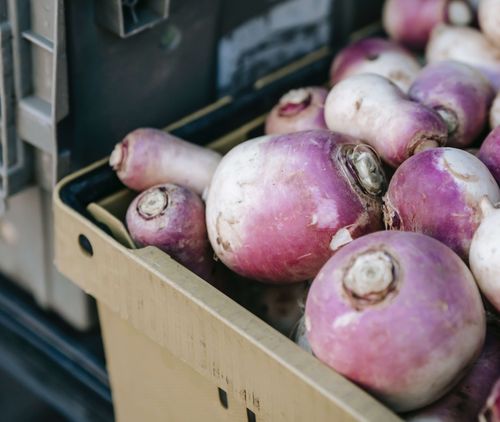
Turnips are a surprisingly fast-growing vegetable and quite easy to grow for beginners. They can be planted in early spring and will be ready to harvest in just a few weeks. Turnips can be harvested as early as 30 days in, but they will be quite small. They are best harvested at 50-60 days, as the flavor will have more time to develop in the root. Turnip greens are also edible and nutritious – they can be harvested at any time after they reach 4-6 inches in height. When harvesting turnip greens, be sure to leave about an inch of leaves at the root, as this will help the turnip to regrow.
They can be planted in early spring or late summer. In just a few weeks, you will have tender, delicious turnips to enjoy. They are a very low-calorie root vegetable that is rich in vitamins, minerals, antioxidants and fiber. The greens are packed with nutrients as well – in fact, they have several times more nutrients than the roots do! Add the greens or the roots to soups, stews, or eat them raw in a salad. No matter how you enjoy them, turnips are an excellent vegetable to add to your organic garden.
9. Spinach (40-50 days)
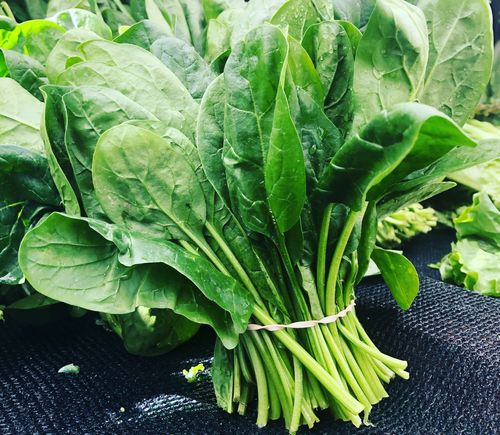
Spinach is a great, versatile option for beginners and intermediates alike. This leafy green is fast to mature, typically ready to harvest in just six to eight weeks, and it is relatively low-maintenance. It is a cool-weather crop, so plant spinach seeds every few weeks from early until late spring to enjoy the tender leaves. Since the roots are shallow, they do well in both garden beds and containers.
To get started, simply sow the seeds in well-drained soil and water regularly. Once the plants have germinated, thin them out so that they are spaced about 3-5 inches apart. Keep the spinach well-watered throughout the growing season and feed with an organic nitrogen-rich fertilizer every few weeks to promote healthy growth. With a little care, you’ll be enjoying fresh spinach in no time!
10. Peas (50-70 days)
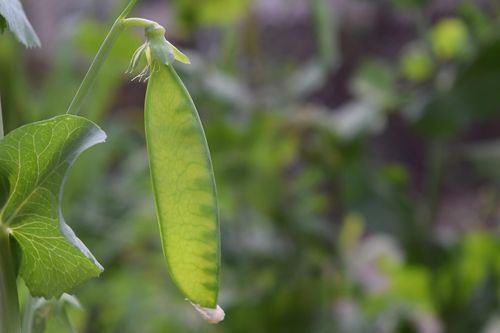
I just couldn’t go through this list without mentioning peas! Although not the fastest vegetable on the list, peas are an excellent starter vegetable and mature within about two months. Sugar snap peas are a favorite among gardeners of all ages and experience; I mean, who doesn’t love sweet, crunchy snap peas straight from the vine in the early summer months? Varieties such as the Dwarf White Sugar Snow Pea are ready to eat 50 days from direct sowing.
Now, peas in particular grow in cooler weather and need to be sown in cold soil. They will likely be the first thing you plant after the winter. I sow my peas as soon as the soil thaws enough that you can dig in it. Peas are cold hardy and seedlings can tolerate a light frost and even snow. Once the plant starts to blossom, however, frost can cause them to drop, so make sure to cover them if a late spring frost is predicted at this stage.
11. Kohlrabi (40-60 days)
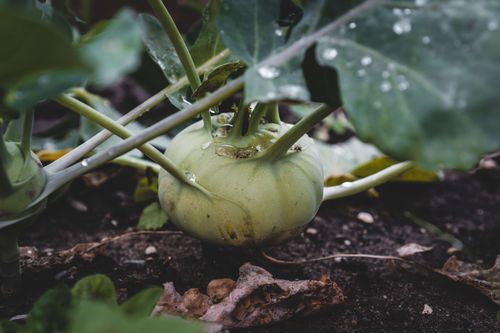
If you want to bring in some uniqueness to your garden, consider planting kohlrabi. Not many gardeners think to grow this vegetable, but it’s fast-growing and easy to care for. It’s also very nutritious, as it is part of the cruciferous family, which includes cabbage, broccoli and kale. You can start your kohlrabi outside as soon as the soil thaws enough to be worked.
Harvest your kohlrabi when it is about 3 inches in diameter, about the size of a tennis ball. It is important not to leave it for too long into the summer, as it can become tough and woody. Plant every two to three weeks in the spring for a continuous harvest until the weather gets too hot.
Conclusion
Now that you know about some of these fast vegetables for beginners, what are you most excited to try in your garden? Let me know in the comments below! Do you have a favorite fast-growing veggie that you always plant every year?
If you’re new to gardening or are in the planning stage for the year, you’re probably starting to look through seed catalogues and getting some ideas for the year. My tip is to try and buy heirloom seeds whenever you can – check out this post about why you should be planting heirloom seeds in your garden!

